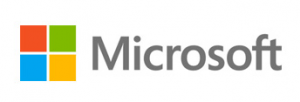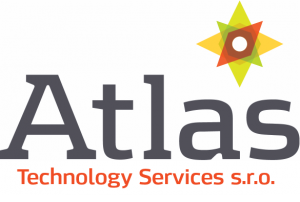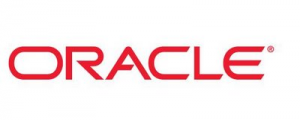Strong brands have a distinct character - interview with Vinzenz Gruber, the head of Europe at Mondelez
8.01.2024Company: A.T. Kearney GmbH - organizační složka
Vinzenz Gruber is the head of Europe at Mondelez. In this role, he drives the food company's “snacking made right” corporate strategy. We spoke to him about how to produce the right snack for the right moment.
Hello, Mr. Gruber. What was the last Mondelez product you ate?
Half an hour ago, a piece of Milka chocolate with all the crunchy hazelnuts in the middle. It's the brand I grew up with and is therefore one of my favorites in the extensive Mondelez portfolio.
In addition to Milka, Mondelez has many of the world's most popular snack brands, such as Oreo, Toblerone, and LU. What do you attribute this success to?
At Mondelez, all employees, whether in production, marketing, or sales, are proud of the diversity of our brands. The team works hard to achieve the best for these brands. Our success is based above all on our rich heritage, as these brands have been built up over many years and are firmly anchored in consumers' lives. At the same time, we are constantly working to make the products contemporary by understanding consumer needs, constantly testing, and constantly developing the range.
What do you think are the three most important points that make a strong brand?
I think the first point concerns the authenticity of the brand. Strong brands have a distinct character, and consumers understand their values and what they stand for. Authenticity creates trust, and that leads to loyalty. In second place is connection; what distinguishes great brands is the emotional bond they build with people. To come back to Milka: I grew up with it; I have memories of this brand that go back to my childhood. And these memories don't fade; it's a lasting relationship. The third point is about brand identity. Strong brands are unmistakable. They have a dress code and convey a certain personality through design, packaging, or shape. Think of Toblerone, for example—it has a very distinctive, edgy look.
Do these criteria also apply when looking for new brands for Mondelez?
Ideally, yes. When we look outside our own portfolio to see what might be suitable for acquisition, we pay particular attention to the complementarity of a potential brand to our portfolio. In 2022, we acquired the organic energy bar manufacturer Clif Bar & Company. What looks like a small segment at first glance has developed into quite a large business in some markets over time.
What are the key elements in the search for new products for your brand portfolio? Can you describe the research process? And how do you go about developing a new product or brand?
Market research is a constant focus for us to understand the changing snack market. An important trend is the shift from traditional meals to snacks due to changing lifestyles. We are closely monitoring how consumers choose their snacks and meals. We also recognize that different moments in life create different needs. With chocolate, for example, there is what we call “for me”—when people are looking for something to indulge themselves. There's also “for us,” when people want to share a snack with someone, whether it's to take home or to enjoy with friends. And finally, there is “for them” when it comes to giving something as a gift. Each moment requires specific product offerings, for example, elegant packaging for gifts and classic snacks for personal consumption.
Toblerone is definitely a “for them” product, isn't it? I'm at the airport and buying a pack to bring home.
Definitely. It's also interesting that you mention that. Because that's exactly the moment we're observing. We have consumer insights that show that people are a bit more stressed at the airport when they go through security, for example. But once they're in the departure area and have a bit more time before their flight, they think about what they could do for others or bring with them. That's the “for them” moment.
How do you approach innovation in areas such as sustainability, health, and ingredients while maintaining the identity and appeal of the brand?
It's a combination of respecting the brand's history and, at the same time, adapting it to modern times. We call this process “brand renovation.” It involves a comprehensive evaluation of the brand from different angles. We look at it from a product perspective, from a taste perspective, from a design perspective, and even from a sensory experience perspective. In this way, we find out which aspects can be improved or optimized to better suit modern tastes and preferences. This can lead to a more contemporary design, adjustments to the product shape, or finer details such as the shape of the chocolate piece itself, as we have found that this can influence the overall taste experience. All of this serves to enhance the appeal and utility of the brand.
Are you responding to specific consumer preferences by changing the shape of the chocolate?
Yes, I believe that branding encompasses the entire consumer experience from start to finish. Consumers don't necessarily separate these aspects rationally. Branding in the purchase phase is about packaging design and brand recognition. The enjoyment phase is about the eating experience, alone or in company. We take a holistic approach because there may be moments or elements that we emphasize more than others in order to clearly communicate our products and brands to the consumer.
A strong brand is one thing; effective communication is another. How has brand communication at Mondelez changed over the past 10 years?
Mondelez brand communication has changed a lot over the past 10 years. We have adapted to changing consumer behavior and preferences. This also applies to our packaging, which has become more interactive and often contains QR codes as a means of communication. We have also shifted our communication to social media, where we can engage with consumers faster and more effectively. This shift has allowed us to listen to consumer feedback and gain insight into their interests and perceptions of our brands.
And where do you see Mondelez in the next 10 years?
Our goal is to become the world's leading snacking company. To achieve this, we must set ourselves certain goals and fulfill specific requirements. We are constantly looking at what is missing from our portfolio to be able to offer a comprehensive range. We keep a close eye on consumer trends and adapt our products to their needs, with sustainability being an important aspect. Consumers today want more than just taste and ingredients; they want to know how products are made and what their environmental impact is.
Is there a product that you have recently developed at the request of consumers? Or perhaps due to requests or wishes from social media?
Yes, we have. One example is the Belvita line, which didn't even exist five years ago. We developed this product line specifically for a more health-conscious snack target group that we hadn't covered sufficiently before. Another example: we combined cookies with chocolate. This has resulted in a significant business segment throughout Europe, in which we combine brands such as Milka and Cadbury with the world of cookies. This is not just about co-branding, but about offering consumers a finer cookie experience than was previously possible.
A good two years ago, before the current Barbie hype, the pink Oreo edition with Lady Gaga came onto the market. What significance do collaborations with stars have for Mondelez?
In 2021, we collaborated with Lady Gaga to create a new Oreo variant. We wanted to make the product better known and therefore collaborated with the pop star. Since then, we've had other collaborations, including with Batman. Oreo is positioned as a playful brand, and formats like this fit in well. Next time we will surprise with PacMan, the first-generation computer game. Although such collaborations are not a continuous strategy and are not always linked to celebrities or other brands, they have become a mainstay of our marketing activities. They modernize our brands and trigger emotions in our customers.
Many consumers are more familiar with brands such as Cadbury, Milka, Oreo, and Toblerone than with the relatively young parent brand Mondelez. How do you increase awareness of the Mondelez brand?
Mondelez is first and foremost our company name, which is not intended to function as a consumer brand in the traditional sense. Its meaning is aimed more at B2B investors who need to understand the company behind these well-known brands. We focus on our consumer brands. Over time, Mondelez may gain awareness among our consumer base, but it is not our goal to elevate Mondelez to the level of our other consumer brands.
What is at the core of Mondelez' corporate culture when we go beyond the slogan “snacking made right”?
Corporate culture is immensely important, and our slogan “snacking made right” serves as a guiding principle for our daily operations and decisions. I personally appreciate one word in this slogan: “right.” It stands for the simple but fundamental question we often ask ourselves in life: “Is it right or wrong?” This serves as a compass, not a math exercise, and it helps our company and our employees determine the right course of action. Our goal is to get snacking “right” in various dimensions. This can relate to sustainability, such as using more recyclable packaging or focusing on natural ingredients. At its core, it unites our large team and guides our actions in the market.
Let's take a closer look at the topics of sustainability and CSR. How is Mondelez involved in these areas?
Sustainability is critical to our company and our brands. It's not just my personal mission, but a passion that runs through our entire organization. We have embedded sustainability as one of the four pillars of our strategy, alongside growth, execution, and culture. We want to be leaders where we have the greatest impact. This applies above all to cocoa and wheat, as these are our most important ingredients. And we want to make a contribution where the world needs it most, particularly in the areas of packaging and CO2 reduction.
Are there any special initiatives or commitments here?
We work with our partners and farmers in the cocoa-growing regions to support their lives and improve their farming methods and income. By 2030, we plan to invest a total of US$1 billion since the start of the program. The results are measurable and promising. They confirm that our approach is helping to bring about meaningful change. In Europe, we are also pursuing the “Harmony” program, in which wheat farmers commit to adopting certain agricultural practices to ensure greater sustainability. These efforts also extend to our packaging and CO2 reduction targets. We have clear intentions in terms of sustainability: by 2025, 100 percent of our packaging should be recyclable, and the entire volume of cocoa for our chocolate brands worldwide should be sourced via “Cocoa Life.” We want to be CO2-neutral by 2050.
As you just said, a brand can only be successful if you work with the right partners. How do your retail partners help you to be successful?
Working with retailers is very important to us. It's about serving consumers effectively. When we have open and collaborative partnerships with retailers, we are more successful. Consumer and shopper insights are both important, but different. We combine this knowledge for the benefit of consumers. Data plays an important role here, particularly using artificial intelligence to extract valuable insights from the vast amount of information available. This helps us make informed decisions and improve our collaboration with retailers.
Are you also part of the overall marketing and branding process?
Yes, the retail partners play an important role in this process. Sometimes we work with them at a very early stage to share our concepts and ideas with them. This also gives us room to experiment. This allows us to test and learn to refine our strategies before we implement them on a larger scale.
One last question: When did you first see the bear on the Toblerone logo?
Someone showed it to me when I was working in the chocolate industry. It's fascinating to discover the hidden meanings and codes behind these chocolate brands. The bear in the Toblerone logo symbolizes Bern, where the Toblerone factory is located. It is the symbol of the city. The name Toblerone is made up of the names of the founders, the Tobler family, and “Turrón,” because the chocolate contains small pieces of Turrón.
Interested in learning more about our consumer and retail expertise?
Learn more
Author
Mirko Warschun
Partner
Tags: Business Development |







